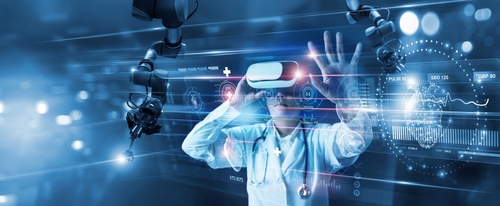
☝️ At a glance
- Gene therapy offers new hope for genetic disorders.
- AI enhances diagnostic accuracy.
- Innovative cancer treatments improve survival rates.
- Regenerative medicine repairs organs and tissues.
- Telemedicine improves healthcare access.
In 2024, medical science continues to move forward, bringing us closer to a future where many diseases can be managed effectively or even cured. These breakthroughs aren't just incredible feats of technology—they're changing lives. In this article let's dive into some of the latest advancements that are bettering healthcare and bringing hope to patients worldwide.
Gene Therapy: A New Era in Genetic Disorders
Gene therapy is changing how we address genetic disorders, giving real hope to patients and their families. Imagine fixing a faulty gene causing serious illness; thanks to the precise CRISPR-Cas9 tool, scientists can now edit genes with incredible precision, offering hope for curing diseases like cystic fibrosis and muscular dystrophy. Additionally, in vivo gene editing, that is editing genes directly inside the body, is now opening doors for diseases such as hemophilia and sickle cell anemia. It's like rewriting someone's health journey, offering them a chance at a life they never even thought possible.

Become a global doctor with MBBS abroad!
Studying abroad can be affordable and stress-free with futureMBBS:
- World-recognized universities with English-taught programs
- On-site support in partner university cities
- Guaranteed placements & internships for hands-on experience
From selecting universities and supporting you with the application process to orientation and finding accommodation – we are at your side.
AI and Machine Learning in Diagnostics
AI and machine learning are not just buzzwords; they're changing how we diagnose diseases. We get anxious waiting for test results but now with AI-powered imaging techniques we can detect early signs of diseases like cancer and heart disease with incredible precision. Such technologies can help to analyze vast amounts of data, while spotting patterns that even the best human eyes might miss. Predictive analytics, another AI application, can forecast disease outbreaks and patient outcomes, allowing for proactive measures.
It's about using technology to bring a sense of security and accuracy to diagnostics, making healthcare more responsive and personalized.

Study medicine abroad with 100% support!
futureMBBS offers full support to make your dream of studying medicine abroad a reality.
- Hassle-free admission guidance
- Fast-tracked visa processing
- Post-arrival support, including accommodation assistance
Innovations in Cancer Treatment
Cancer is a scary word for many, but there's hope with recent advances. Immunotherapy, for example, strengthens the body's own defenses to fight cancer cells, giving patients a better chance at survival. Imagine a treatment that not only targets cancer cells but also minimizes damage to healthy tissues. That's what targeted therapies are doing.
Such medical advances have given patients and their families new hope and possibilities.
Cutting-Edge Vaccines for Emerging Diseases
The success of mRNA vaccines during the COVID-19 pandemic have now paved the way for their application to other infectious diseases like Zika and Ebola. This technology allows for fast vaccine development, which is crucial in responding to emerging health threats. Further, researchers have also now started working on a universal flu vaccine that could protect against all strains, potentially revolutionizing how we combat the flu.
These advancements mean better preparedness and protection, ensuring that we're not caught off guard by new disease outbreaks.
Regenerative Medicine: Repairing and Replacing Tissue
Regenerative medicine is like seeing science fiction come to life. For example, stem cell therapy which is offering hope by repairing damaged tissues, potentially treating conditions like spinal cord injuries and heart disease. Then there's 3D bioprinting, where scientists can make custom organs and tissues. This isn't just about healing, it’s taking healing to the next level.
Nanomedicine: Precision Drug Delivery and Minimally Invasive Treatments
Nanomedicine has made drug delivery more efficient and quicker. Nanoparticles deliver drugs directly to diseased cells, while reducing side effects and improving treatment efficacy. Nanosurgery, which uses tiny tools for precise operations, offers minimally invasive treatment options, reducing recovery times and improving outcomes.
These advancements mean treatments that are not only more effective but also gentler on patients.
Telemedicine and Remote Patient Monitoring
Telemedicine has become a lifeline for many, especially in underserved and rural areas. Virtual consultations allow patients to receive medical advice from the comfort of their home, while wearable health devices monitor their health in real-time. These advancements are making healthcare more accessible, ensuring that everyone gets the care they need, exactly when they need it. It's about putting patients first and closing the gap between doctors and those they care for.
Personalized Medicine: Tailoring Treatments to Individual Genetic Profiles
Personalized medicine is changing healthcare by tailoring treatments to an individual’s genetic profile. Pharmacogenomics, which studies how genes affect a person's response to medicine, allows for personalized medication plans, and reduces the trial-and-error approach in prescribing treatment plans. Furthermore, genomic sequencing is helping identify risks for certain diseases, thus enabling personalized preventive measures. It acknowledges each patient's uniqueness, ensuring treatments are tailored to their specific needs.
Conclusion
The medical breakthroughs of 2024 are not just scientific achievements, but they're a source of hope for humanity. From gene therapy and AI diagnostics to innovative cancer treatments and regenerative medicine, these advancements are making healthcare more effective, personalized, and accessible. These advancements are about hope, healing, and the relentless pursuit of a healthier future for all.
For more insights into the latest medical advancements, stay in touch with futureMBBS
Your medical career abroad starts here!
Thinking of pursuing MBBS abroad? Don’t just dream it, do it!
Start your MBBS journey!






